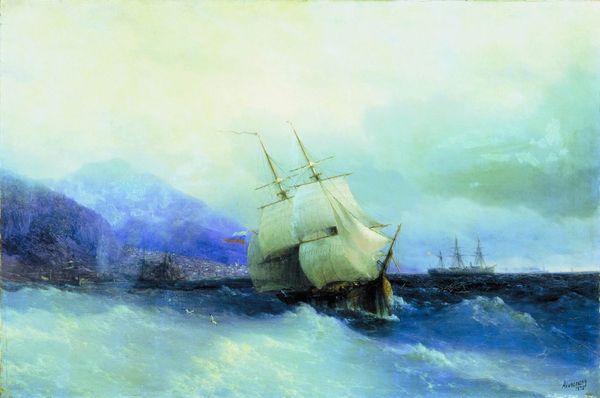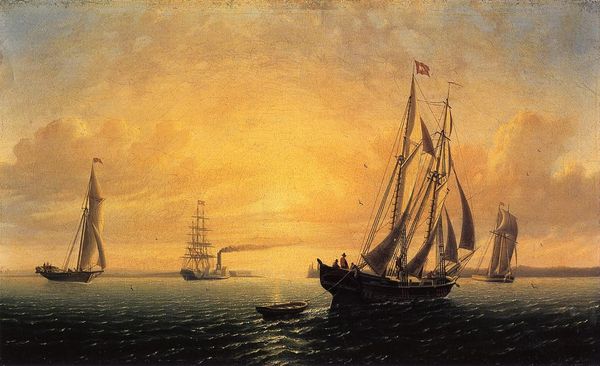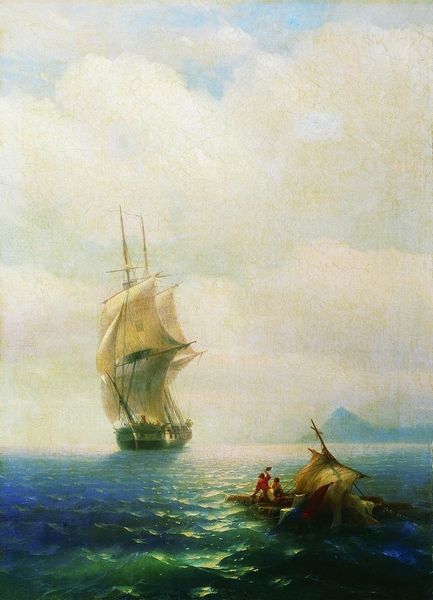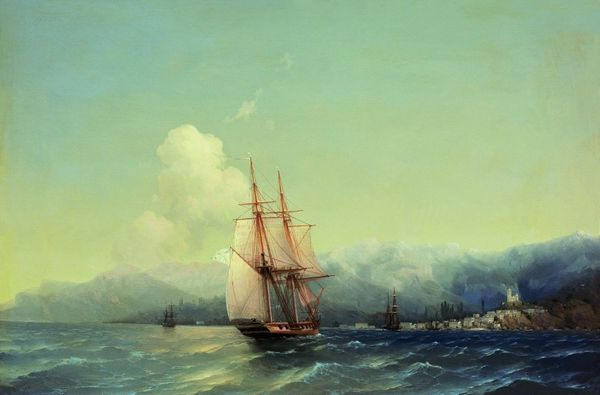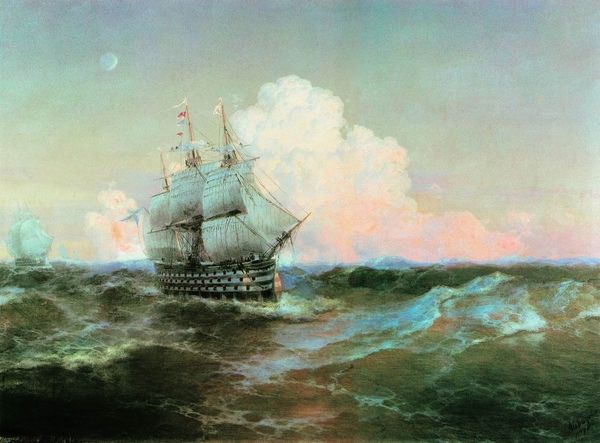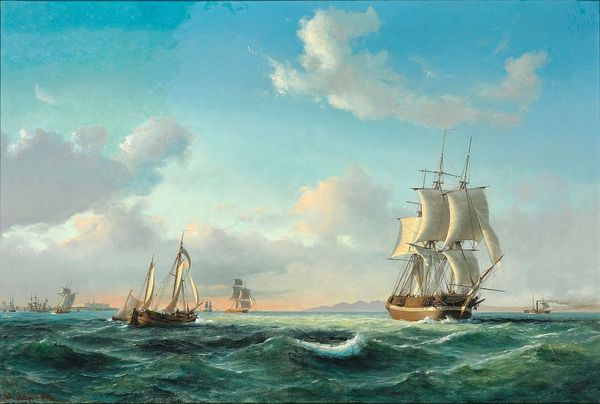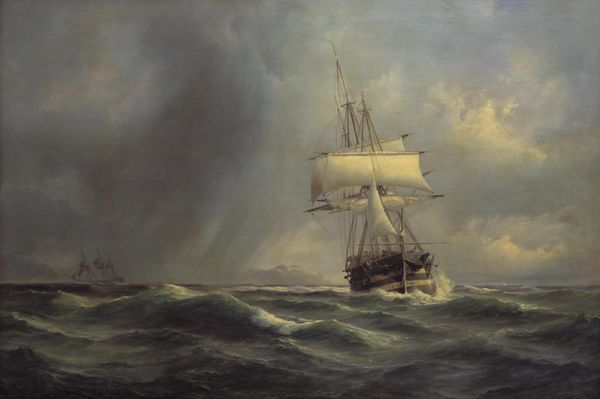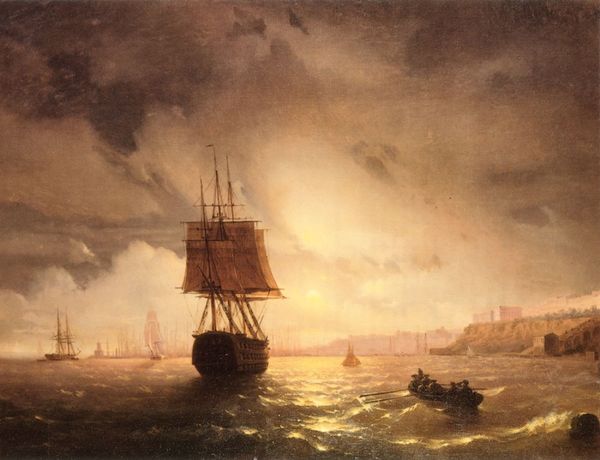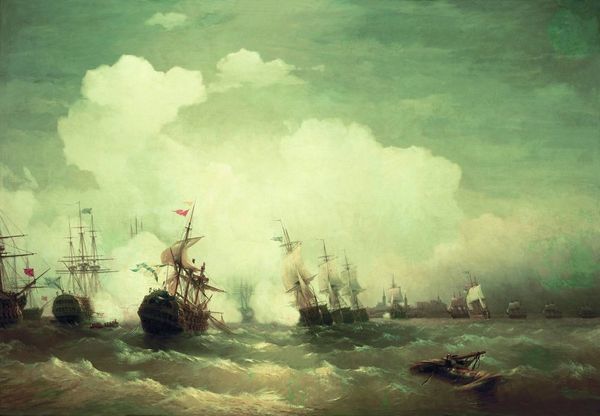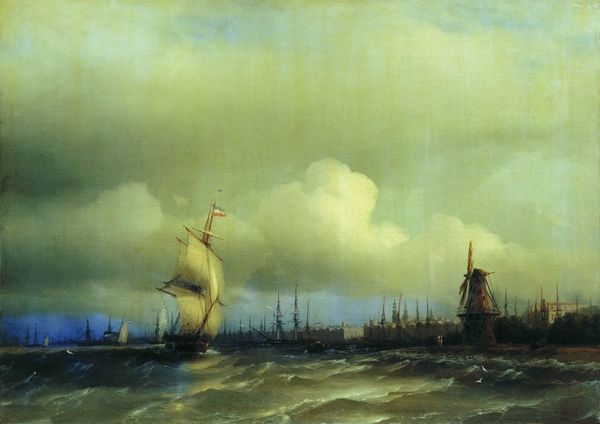
Copyright: Public domain
Curator: The artwork we're looking at is "Sailboat" by Ivan Konstantinovich Aivazovsky, created in 1859 using oil paint. Editor: My initial reaction is drama. The light against the dark storm clouds, the ships struggling in the waves, it all speaks of man versus nature, that timeless theme. Curator: Absolutely. Aivazovsky was the foremost Russian marine painter. The image encapsulates the Romantic movement's fascination with the power and sublime terror of nature. Note how paintings like this one were popularized at national exhibitions, reinforcing ideas of Russian power on the seas and national identity tied to exploration. Editor: That makes sense, seeing the ship, the flag, immediately sparks ideas of a national identity, maybe even national pride. Water is a deep symbol of cleansing, renewal, but in a tumultuous scene like this, it definitely leans toward the chaotic aspects of change, doesn't it? There are smaller ships far in the background; is this symbolic of the past being swept aside by present danger? Curator: It is definitely meant to be read with certain historic awareness. Imperial Russia, hungry to participate in global maritime trade, understood its progress being directly affected by natural phenomenon like weather conditions, trade winds and more. You also need well-trained personnel. To commission artwork of this quality helps justify funding for these things. Editor: So this serves more as propaganda for social change through funding, while simultaneously being a beautiful piece? The sky itself feels almost like a character here. You've got those ominous, almost biblical, storm clouds, but then these streaks of golden sunlight bursting through as well. Curator: Indeed. These paintings acted as both sources of visual enjoyment and affirmations of national and Imperial agendas. This particular work uses its dynamic composition and play of light and shadow to glorify maritime ventures underwritten by Imperial policies. Editor: Looking closely, it seems that despite the turmoil, the ships endure. Perhaps a representation of resilience and hope amidst uncertainty? Or maybe an assurance of Imperial steadfastness? Curator: Precisely. Such details subtly affirmed stability and divine endorsement. Editor: It definitely offers a captivating look at a historical moment through an artistic and socio-political lens. Curator: Indeed. It encourages us to consider art's role in both reflecting and shaping our understanding of power, progress, and national ambition.
Comments
No comments
Be the first to comment and join the conversation on the ultimate creative platform.
